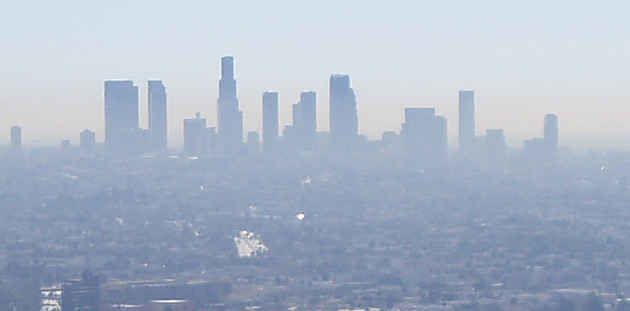Daniel Yergin is one of those authors who writes major works.
His Pulitzer Prize-winning The Prize is nothing less than the definitive history of the rise of the petroleum industry, and his latest, The Quest: Energy, Security, and the Remaking of the Modern World, starts where that book left off and looks forward into a future of multiple energy sources.
His writing is fascinating, but ... ahem ... of epic length. So reading him in excerpt may be the best introduction for novices.
Which brings us to a piece he wrote last week in the Los Angeles Times, looking at the history of smog and its role in the development of modern-day electric cars such as the Nissan Leaf and Chevrolet Volt.
Yergin's summary history may be a touch optimistic--we think it's too early to tell if the arrival of the very first electric cars is the mark of "a shift back" to 1900, when more electric than gasoline cars were sold in major cities--but his story of the scientist who decided to decipher smog is well worth the reading.

Los Angeles Smog
Arie Haagen-Smit was able to prove, quickly, that smog was caused not by more than 1 million backyard trash-burning incinerators but by the incomplete combustion of gasoline in the region's millions of automobiles--which in 1948 had not a shred of pollution control equipment of any kind.
California became the first state in the nation to mandate pollution controls, well before the 1970 establishment of the U.S. Environmental Protection Agency, and its powerful Air Resources Board has now twice mandated sales of a certain percentage of zero-emission vehicles.
The first attempt in the late 1990s didn't stick--that's another story for another time--but CARB's grandfathered ability to set its own emissions standards has exerted a powerful pull on national standards.
It is planning to add requirements that automakers sell rising percentages of zero-emission vehicles on top of the proposed national corporate average fuel economy standards, as it disclosed last month in standards it's expected to adopt in February.
Those rules will take 2025 model-year vehicles to an average of 54.5 mpg (which translates to window stickers in the low 40s).
We encourage you to read all of Yergin's article, to gain an understanding of how California came to have its special significance in modern electric-car history.
And if you ever visited the Los Angeles Basin on a hot, overcast day (they're known as "inversions") when the smog was at its worst, you'll understand exactly why it all came to be.
+++++++++++













